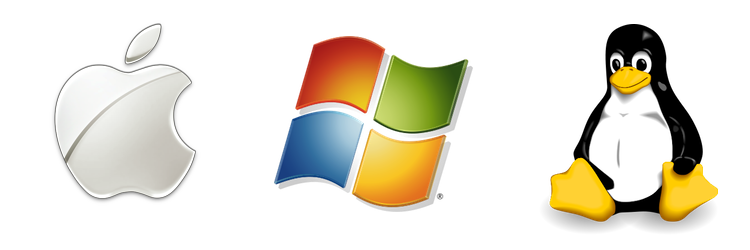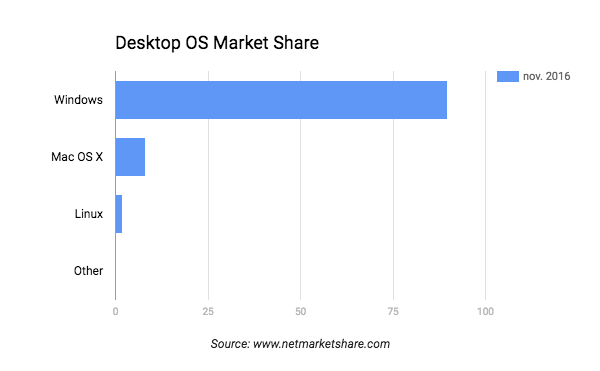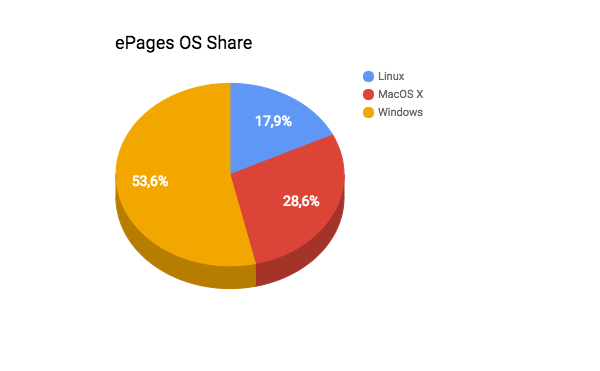When we discuss about operating systems, we can often find people who show a kind of evangelism to the one or other OS. Especially between developers and people who spend lots of time in front of their computers. They find a kind of complicity with their systems that make them passionate defenders or detractors of one or the another choice.
Let’s have a look at some general advantages and disadvantages we could find in every of the three main OS we can run nowadays in our laptops: MacOS X, Linux, and Windows.
MacOS X
MacOS X is probably considered the coolest OS of the moment. Mac lovers argue that MacOS X has a great performance and stability, because it’s a closed UNIX based system that also has a beautiful and carefully designed UI. Easy to use for plain users who can do their stuff providing some very good killer features like Spotlight, but also allow pro users to have more complex usage of the system. The point against Macintosh is that you need an approved hardware to run MacOS X; machines which normally are pretty nice but pretty expensive too, especially compared with other white label machines.
Linux
The Linux system is also UNIX based, and their fans are usually hard believers of open source software and use to think they can find on the net any application they need for whatever purpose. Linux has a practical advantage against others because it’s meant to run on almost any machine, no matter if it’s an old or new PC. For these purposes, any Linux distribution could probably fit and please you, especially if you don’t pay much attention on usability and user experience and also have some time to spend compiling kernels. But if not, probably you would prefer another more user-friendly distribution like Ubuntu.
Windows
MacOS X and Linux users share a similar desire to avoid using Windows, but Windows still has its market and in fact is the dominant PC operating system because users like it. And despite the general belief still there are some developers who prefer Windows instead of other options, because you can pretty much develop on any platform or programming language. But on the other hand most of the virus and malware attacks goes against Windows platforms because of its security vulnerabilities historically suffered by Windows users.
Some statistics
Leaving fanaticisms aside and bringing to the front some statistics on what’s the current market share all over the World in November 2016, we’ll probably have a surprise on what is the real percentage of utilization for each OS. The world of desktop operating systems is not divided between a bunch of competitors but divided between Windows and the others:
If we have a look at the colors of the chart we will see, in a very first place, an evident domain of Windows platforms (89.79% of the market). There are two Windows versions which are the most popular ones: 7 and 10 in that order, covering almost 70% of the market. Bill should be happy indeed watching at that numbers. The second place is for MacOS X that has experienced such a great increment in number of users since the last 10 years. Mostly because of the appearance of Apple’s smartphones and tablets, iPhone and iPad and the raise, in terms of popularity, of the company. The third and last place is for Linux, getting in comparison a much reduced slice of the cake, but with a very committed and enthusiastic community of advanced users.
What about ePages?
Now let’s have a look at how it looks like at ePages.
ePages is an open-minded company where developers can choose their favorite environment to work with or simply the one which they feel more comfortable with. Of course it’s not always possible due to IDE, software or hardware restrictions, but in most of the cases it is. Here we can also find the three big players: Ubuntu, MacOS X, and Windows.
A quick look at the numbers will show us that ePages has a nicely mixed ecosystem of OS:
If we take a look at the status of OS installations by departments, we can find out that Product Management, Sales, and Marketing are the ones where Windows is more extensively used. Graphic designers have a natural tendency to using Mac. And within R&D, there is the biggest mix of systems with Windows as the most commonly used. A closer look to Ocean Teams shows that in this case Linux has a bigger piece of the cake (35.9%) than in previous charts and on the other hand MacOS X has a little bit less weight between developers (26.6%). But Windows still is the most used platform (37.5%).
Development environments with virtual machines are completely another world in terms of the operating systems they are running. In this case, Debian and CentOS are the most commonly used Linux distributions to work with the ePages platform. Here Linux wins without opposition.
Now it’s your turn: which operating system would you choose?
Note: Statistics are an extrapolation of usage from a significant bunch of ePages employees.




